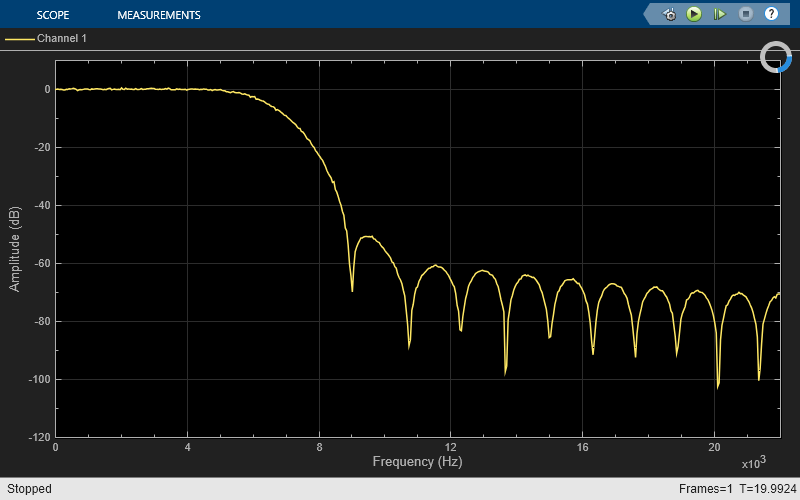Discrete Transfer Function Estimator
Compute estimate of frequency-domain transfer function of system
Libraries:
DSP System Toolbox /
Estimation /
Power Spectrum Estimation
Description
The Discrete Transfer Function Estimator block estimates the frequency-domain transfer function of a system using the Welch’s method of averaged modified periodograms.
The block buffers the input data into overlapping segments. You can set the length of the data segment and the amount of data overlap through the parameters set in the block dialog box. The sample rate of the block is equal to 1/T. T is the sample time of the inputs to the block.
The block first applies a window function to the two inputs, x and y, and then scales them by the window power. It takes the FFT of each signal, calling them X and Y. The block calculates Pxx which is the square magnitude of the FFT, X. The block then calculates Pyx which is X multiplied by the conjugate of Y. The output transfer function estimate, H, is calculated by dividing Pyx by Pxx.
Examples
Ports
Input
Output
Parameters
Block Characteristics
Data Types |
|
Multidimensional Signals |
|
Variable-Size Signals |
|

